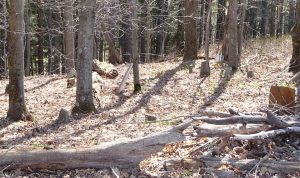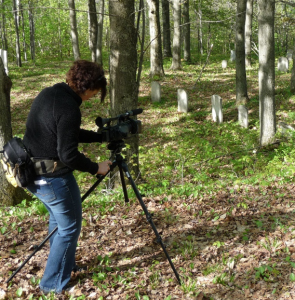The men and women buried in these sites were the 19th century American and European pioneers in this area. They felled the trees, cleared the rocks and tilled the land; they worked in the mills and taught in the schools, built the roads, the farms and the churches. They helped to create the beautiful landscapes that we enjoy today. Many of today’s residents in West Bolton have ancestors lying in these grounds.
All three burial grounds are on private land and two were threatened by gravel pits. Trees have grown up among the graves and all of the headstones have deteriorated – cracked, broken, fallen over, partially buried, the surface flaking off with inscriptions barely legible.
We have cleaned the three burial grounds, fenced them with a simple chain and T-bar fence and placed a large, engraved marker stone at the entrance to each of them. The fence is there neither to keep animals out nor to keep the people in, but rather to make a statement: This is a special area. The fence sets the burial ground apart from the surrounding woods and fields.
We have not attempted to clean, repair or conserve any of the grave stones because preservation is a contentious issue and there is no agreement among the experts on the best way to do this. We brush the stones lightly and do not attempt to move them.
It is a fitting tribute to the men, women and children who came before us that we were able to protect their last resting places, maintaining and preserving them as part of the heritage of West Bolton and the Eastern Townships. Named or not named, famous or not, those who have passed on deserve to be treated with dignity and respect.
The owners of the three burial grounds, none of which is visible from any road, do not want numbers of people visiting the sites. This is why we have not included the whereabouts of the grounds.
Before describing the sites, I wish to thank the Cemetery Committee members for their diligence and perseverance as well as the numbers of wonderful volunteers who helped us fence the cemeteries and place the heavy marker stones.











